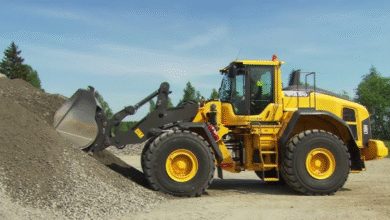What Makes a Durable and Long-Lasting Concrete Installation?

Concrete is one of the most durable and versatile building materials, but not all concrete installations stand the test of time. The longevity of a concrete structure depends on various factors, from material selection to proper installation techniques. Working with concreting experts ensures that all aspects of the process contribute to a long-lasting, resilient result.
Reason 1: High-Quality Materials Make a Difference
Selecting the Right Type of Concrete
Not all concrete is created equal. The type of concrete mix used can significantly impact durability. High-quality cement, properly graded aggregates, and the correct water-cement ratio are essential for strength and longevity. Concreting experts recommend choosing a mix suited for the specific application, whether it’s for a driveway, patio, or foundation.
Importance of Proper Additives
Additives such as fly ash, silica fume, and plasticizers can enhance the properties of concrete. These materials improve strength, reduce permeability, and enhance workability. Concreting experts understand which additives to use to enhance the performance of concrete in different conditions.
See also: How Can Digital Marketing Help Grow Your Building Company’s Client Base?
Reason 2: Proper Site Preparation Prevents Future Problems
The Role of a Stable Foundation
A poorly prepared foundation can lead to cracking, shifting, and premature deterioration. The ground beneath the concrete must be compacted and leveled to prevent settling over time. Concreting experts ensure that the soil conditions are suitable for a stable installation.
Effective Drainage Planning
Water is one of concrete’s biggest enemies. Without proper drainage, water can accumulate under or around the slab, leading to cracks and erosion. Concreting experts implement effective drainage solutions to protect installations from water damage.
Reason 3: Reinforcement Strengthens Structural Integrity
The Importance of Rebar and Mesh
Reinforcing concrete with steel bars (rebar) or wire mesh increases its tensile strength, reducing the risk of cracking under pressure. Proper reinforcement is especially important for load-bearing structures like driveways, foundations, and bridges. Concreting experts strategically place reinforcement to maximize the strength of the concrete.
Fiber Reinforcement for Added Durability
In some cases, fiber reinforcement can be used to improve concrete’s resistance to cracking and shrinkage. Fibers help distribute weight more evenly and prevent micro-cracks from expanding. Concreting experts can recommend fiber-reinforced concrete for high-stress applications.
Reason 4: Correct Pouring and Curing Techniques Ensure Longevity
The Right Pouring Process
Concrete must be poured at the right temperature and with the correct consistency to prevent weaknesses in the structure. Rapid temperature changes, excessive moisture, or improper mixing can lead to weak spots. Concreting experts follow best practices to ensure a uniform and durable pour.
Curing for Maximum Strength
Curing is a critical step in the concrete installation process. It involves maintaining moisture and temperature conditions for a set period to allow the concrete to reach its full strength. Skipping or rushing the curing process can lead to premature cracks. Concreting experts use proper curing methods, such as wet curing or sealing, to enhance durability.
Reason 5: Weather and Environmental Considerations Impact Longevity
Protecting Concrete from Extreme Temperatures
Concrete expands and contracts with temperature changes, which can lead to cracks over time. Using expansion joints and weather-resistant materials can mitigate these effects. Concreting experts account for climate conditions when designing installations to prevent thermal damage.
Reducing Water and Freeze-Thaw Damage
In colder climates, freeze-thaw cycles can cause water within the concrete to expand and contract, leading to cracks and surface damage. Applying sealants and using air-entrained concrete can help prevent these issues. Concreting experts recommend protective measures based on regional weather conditions.
Reason 6: Regular Maintenance Extends Concrete Lifespan
Sealing and Resurfacing
Applying a protective sealant to concrete surfaces can prevent moisture infiltration, stains, and surface deterioration. Over time, resurfacing may be needed to maintain appearance and function. Concreting experts suggest a sealing schedule based on usage and exposure to the elements.
Preventing and Repairing Cracks Early
Small cracks in concrete can worsen if left unaddressed. Regular inspections and timely repairs help prevent larger structural problems. Concreting experts can assess damage and recommend effective repair solutions to maintain durability.
Conclusion
A durable and long-lasting concrete installation depends on high-quality materials, proper preparation, reinforcement, correct pouring and curing, environmental considerations, and ongoing maintenance. Consulting concreting experts ensures that every aspect of the installation process is optimized for strength and longevity, ultimately providing a reliable and lasting structure.




